I saw the best minds of my generation destroyed by madness, starving
hysterical naked,
dragging themselves through the negro streets at dawn looking for an angry
fix,
angelheaded hipsters burning for the ancient heavenly connection to the
starry dynamo in the machinery of night,
who poverty and tatters and hollow-eyed and high sat up smoking in the
supernatural darkness of cold-water flats floating across the tops of
cities contemplating jazz,
who bared their brains to Heaven under the El and saw Mohammedan angels
staggering on tenement roofs illuminated,
who passed through universities with radiant cool eyes hallucinating Arkan-
sas and Blake-light tragedy among the scholars of war,
who were expelled from the academies for crazy & publishing obscene odes
on the windows of the skull,
who cowered in unshaven rooms in underwear, burning their money in
wastebaskets and listening to the Terror through the wall, ….
( Allen Ginsberg, opening lines, Howl )
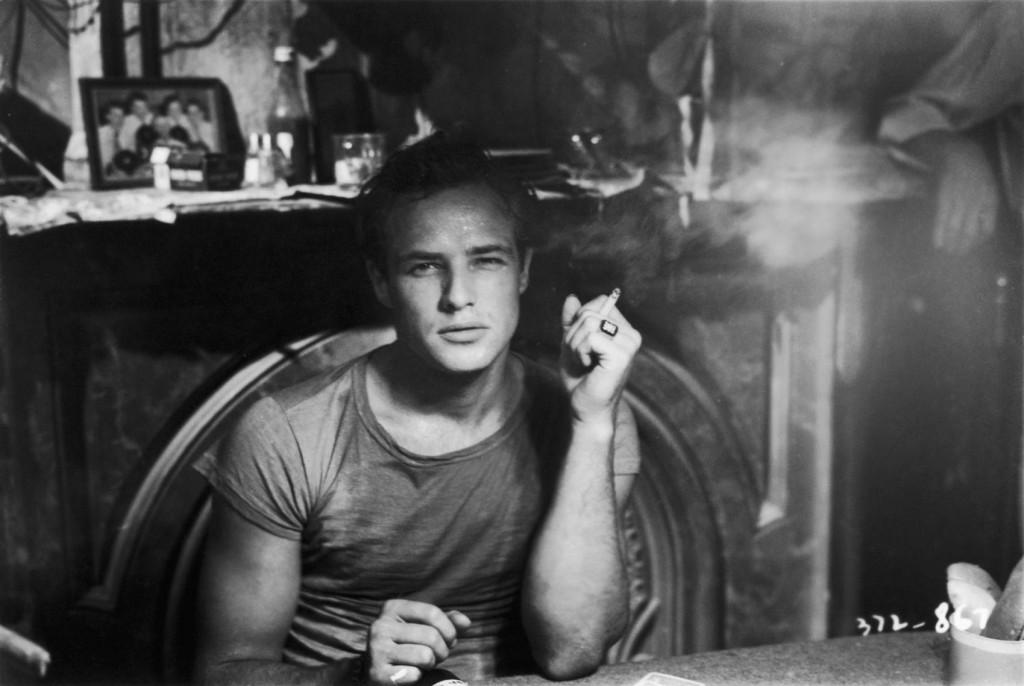
"That night, Stanley's poker game runs late and, when Stella and Blanche return from an outing together, Blanche meets Stanley's best friend Mitch, a bachelor who looks after his sick mother. Blanche turns on the radio and dances by herself, but Stanley is distracted by the music and flies into a drunken rage, during which he beats Stella. Stella and her terrified sister run up to their neighbor Eunice's apartment; later, when Stanley calls up to her in remorse, Stella is drawn back to her husband and makes up with him. Blanche, horrified by Stanley's brutality, lingers in the street with Mitch. The next day, Stanley overhears Blanche encourage Stella to leave Stanley, whom she calls an "animal" and "subhuman," but she is unable to shake Stella's devotion to her husband. Stanley reveals that he has heard some unsavory gossip about Blanche, and his apparent secret knowledge unnerves her."
When a hitherto unknown actor named Marlon Brando in the late 1940’s assumed the role of Stanley Kowalski, the glowering inarticulate hero of Tennessee Williams’ “A Streetcar Named Desire” , very few realized the symbolic importance of that creation. For Brando was to personify an entire postwar generation of troubled spirits trying to find an identity. In one guise or another, he is the hero of the Beat Generation.
This was the new ideal image; a man of much muscle and little mind, often surly and discontented, prepared to offer violence with little or no provocation. He walks with a slouching, shuffling gait, he scratches himself often and almost never smiles. He is especially identified by the sounds that issue from his mouth. He squeezes, he grunts, he passes his hand over his eyes and forehead, he stares steadily, he turns away, he scratches, then again faces his adversary, and finally speaks- or tries to.
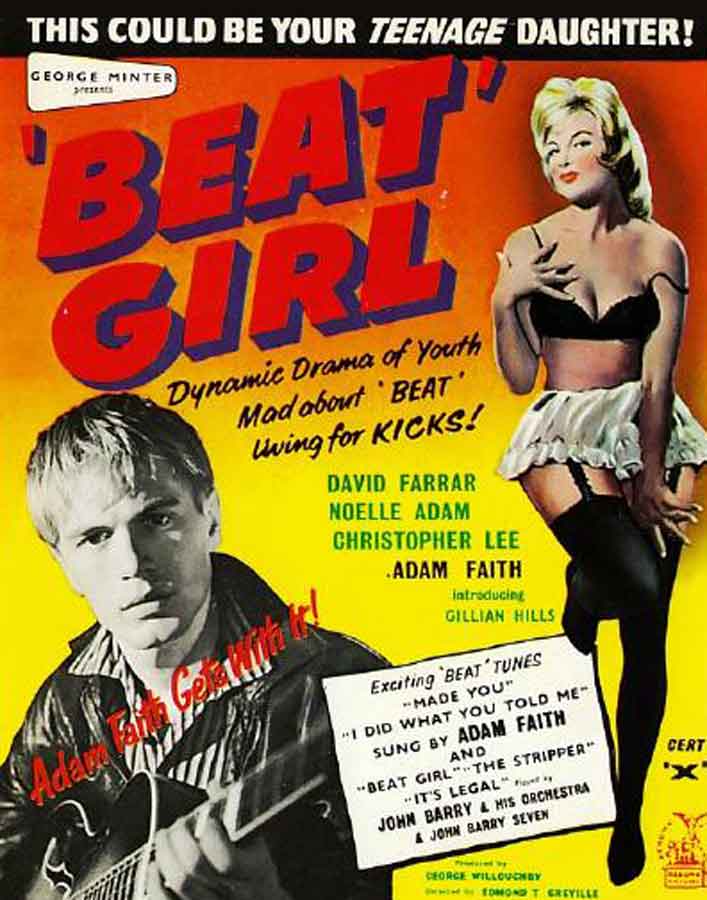
"The term Beat Generation was coined by the author Jack Kerouac in 1948 to characterize the new anti-conformist upbeat attitudes growing amidst the youth culture of New York City. It focused itself around writers of a gritty emotional style that expressed deep spiritual yearnings. Ten years later Herb Caen of the San Francisco Chronicle would coin the word Beatnik as a not so flattering way to describe those who embraced this same hedonistic Bohemian lifestyle as it spread across the Country. The beatniks rejection of conventionality was only part of a larger restlessness that grew out from the chaos of the Second World War, but this was also a time when most people were looking for comfort in a safe and prosperous world."
“Several months ago, a national magazine ran a story under the heading ‘Youth’ and the subhead ‘Mother Is Bugged At Me.’ It concerned an eighteen-year-old California girl who had been picked up for smoking marijuana and wanted to talk about it. While a reporter took down her ideas in the uptempo language of ‘tea,’ someone snapped a picture. In view of her contention that she was part of a whole new culture where one out of every five people you meet is a user, it was an arresting photograph. In the pale, attentive face, with its soft eyes and intelligent mouth, there was no hint of corruption. It was a face which could only be deemed criminal through an enormous effort of reighteousness. Its only complaint seemed to be: ‘Why don’t people leave us alone?’ It was the face of a beat generation.” ( John Clellon Holmes, 1952 )
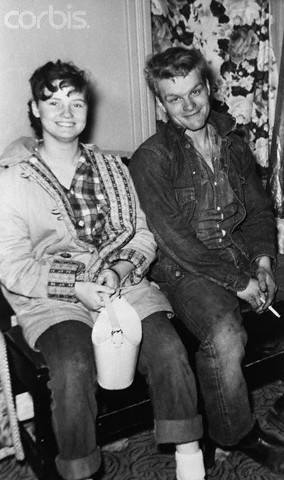
"Can a dysfunctional upbringing ever excuse homicide? That was the question facing jurors in this remarkable saga that changed forever the face of murder in America. Although he had murdered a few weeks before, Charlie Starkweather, a diminutive 19-year-old garbage truck driver from Lincoln, Nebraska, didn't begin killing in earnest until January 21, 1958. This was the day when he visited the home of his girlfriend, Caril Fugate, aged 14. While awaiting her return, Starkweather got into an argument with Fugate's mother. When she tried to slap him, he grabbed a rifle and shot her. Seconds later, Fugate's stepfather was similarly dispatched. Minutes later Fugate arrived home, at which point Starkweather stabbed her 2-year-old half-sister to death. Then, after pinning up a notice in the window that read "Every Body is Sick with the Flu," the couple hunkered down for the next six days, watching television, having sex, gorging themselves on fast food. In that time various people visited the house and met the two teenagers. No one noticed anything out of the ordinary. "
This was a new archetype; a new hero that cut himself off from social and cultural life and teetered on the brink of abdicating from himself. He is a man belligerently exalting his own articulateness. He “howls” when he has the energy, and when he doesn’t , sits around “beat” and detached, in a funk. He is hostile to the mind, petulant toward tradition, and indifferent to order and coherence. He is concerned chiefly with indulging his own feelings, glorifying his own impulses, securing his own “cool” kicks.
The persona was that of exulting in solitude and frequently speaking proudly of “personal vision” . The paradox is that, while outwardly individualistic and anti-social, there is a strong streak of inward conformity and deep seated conservatism. They traveled in packs, wrote collective manifestoes, established group heroes like James Dean, and adhered to the ethics of the coterie. The behavior, fit the stereotype which established the norm. They were often “existential” without having developed any substantial existence. If there was a coherent philosophy, it was often one of simple negation without any purposeful individual rebellion to sustain it.
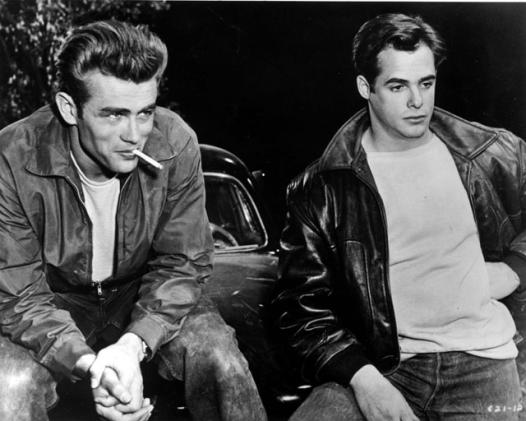
James Dean and Corey Allen. "The ethos of the beat generation had influence across all of the arts. It seemed as if, at the time, the young were breaking free of the old constraints. Marlon Brando and James Dean were ripping through film screens. Jazz musicians such as Charlie Parker and Dizzie Gillespie were playing their music without barriers. Lenny Bruce was questioning racism and sexuality through his comedy routines. Artists such as Jackson Pollock were exploding onto the canvas and ripping apart the Old Masters."
A good argument could be developed that the beat novelists and poets are striking examples of conformists masquerading as rebels. They travel together, drink together, smoke pot together, dedicate works to one another, shared the same pony-tailed girls in faded blue jeans, wore a uniform costume, and took for their collective theme the trials and tribulations of their own troubled souls. The pretension of disaffiliating from the “social lie” was in a sense, membership in a new kind of club, not that different from Shriners of the go-cart and karmic temple or Lions, or Optimists; simply a club whose rules, though more unusual, are no less strict with a range of language, or argot, which was al
uite limited; a message that had an automatism about it that exposed its communal roots.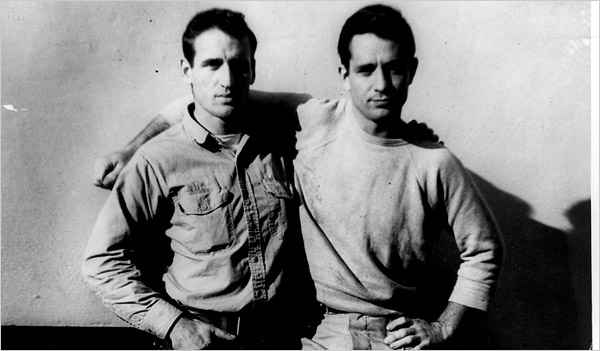
“It’s a book that has aged well,” said Martin Sorensen, floor manager at Kepler’s Books and Magazines in Menlo Park, Calif. A “noticeable” number of copies are sold each year at the store, he said, “certainly more than the average 50-year-old book.” The autobiographical, stream-of-consciousness “On the Road” follows Sal Paradise (a character based on Kerouac) and Dean Moriarty (based on Kerouac’s friend Neal Cassady) as they ramble back and forth across the country, drinking, listening to jazz and having affairs.
“That clean young face has been making the newspapers steadily since the war. Standing before a judge in a Bronx courthouse, being arraigned for stealing a car, it looked up into the camera with curious laughter and no guilt. The same face, with a more serious bent, stared from the pages of Life magazine, representing a graduating class of ex-GI’s, and said that as it believed small business to be dead, it intended to become a comfortable cog in the largest corporation it could find. A little younger, a little more bewildered, it was this same face that the photographers caught in Illinois when the first non-virgin club was uncovered. The young copywriter, leaning down the bar on Third Avenue, quietly drinking himself into relaxation, and the energetic hotrod driver of Los Angeles, who plays Russian Roulette with a jalopy, are separated only by a continent and a few years. They are the extremes. In between them fall the secretaries wondering whether to sleep with their boyfriends now or wait;…” ( Holmes )
Ginsberg was one of the few who was able to articulate anger and the emotion of rebellion, rather than a manufactured and somewhat contrived aesthetic. Most of the rest were either cool, detached, separated from the world and their own existences, or brimming full of an indiscriminate enthusiasm for everything.

"We spoke with the controversial retailer's CEO about the "death of hipsterdom," and he didn't see what the big deal was. "Hipsters are from a certain time period," he said. "The stereotype of a hipster is not something people aspire to anymore. Do you want to be a hipster? Nobody wants to be a hipster," Mr. Charney explained. According to Mr. Charney, fashion goes in 20 year cycles, and preppy is back. "It's hard to put into words - it's about emphasizing products that we have. Our pieces are timeless," he said. What about those lace thong leotards? "Lace thong leotards are not necessarily hipster." Neon spandex stuff? "Neon comes and goes. It could be preppy too." Could it? Charney believes that as the "echo-boomers" get older, they're looking for a more basic, classic look, and that the idea that mostly hipsters buy from American Apparel is just "my perception of the brand." Well. There's that. Hipsters are dead; long live preppies. Who are basically just hipsters in boat shoes."
Kerouac’s ” On the Road” is a travelogue, almost in the European mold of an Alexander Dumas, Charles Baudelaire school dressed in the iconography of the American way, the automobile and the metaphor of the final frontier. The book has an unflagging Whitmanesque zing and demonstrates the American worship of pure physical energy:
“[…] the only people for me are the mad ones, the ones who are mad to live, mad to talk, mad to be saved, desirous of everything at the same time, the ones who never yawn or say a commonplace thing, but burn, burn, burn like fabulous yellow roman candles exploding like spiders across the stars and in the middle you see the blue centerlight pop and everybody goes ‘Awww!’ What did they call such young people in Goethe’s Germany?”
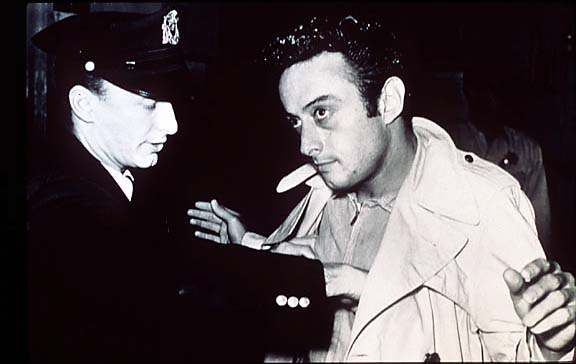
Lenny Bruce. "a freedom fighter with a ginsu tongue. a subversive genius. he gave everything to the cause he most believed in."
Brilliant as it is, the feelings throughout are uncommitted, and the energy undirected. In fact, everything is embraced on equal terms. ” We love everything… we dig it all. We’re in the vanguard of a new religion” . There is some ambiguity as to whether under the shine of a reverence for life, is actually a disguised disgust and boredom with life. For to be “desirous of everything at the same time” also means to be happy with nothing. Like the man who falls in love with every woman, but is unable to love one.
It is no accident that Kerouac’s characters are constantly seeking new kicks outside the pale of everyday experience. The experience of everyday life never touches them. In that speeding car, only the objects move, as if seen in a rearview projector giving the illusion of movement behind stationary actors; while the characters stand immobile. Never learning or growing or developing, essentially they give the impression of remaining perpetually hungry until the inevitable disenchantment sets in.
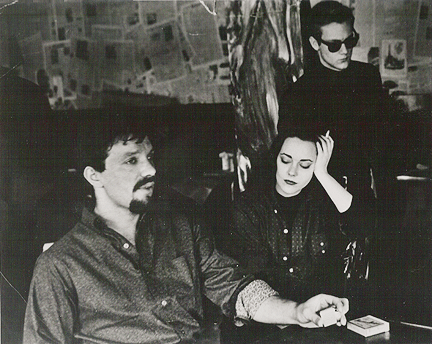
Bill Walker and Ruth Murray Walker (and unknown third party in sunglasses) at Coffee 'n' Confusion. Photo provided by Brandel France de Bravo.
“At lilac evening I walked with every muscle aching among the lights of 27th and Welton in the Denver colored section, wishing I were a Negro, feeling that the best the white world had offered was not enough ecstasy for me, not enough life, joy, kicks, music, not enough night… I wished I were a Denver Mexican, or even a poor overworked Jap, anything but what I was so drearily, a “white man” disillusioned. ”
This attempt to identify one’s self with dispossessed minorities was the hipster’s effort to adopt a ready-made motivation for rebellion, one that seemed devoid and bereft of empathy. In its discontent with physical limitations, it also reflects an effort to escape from the self… ” dreams, drugs, …waking nightmares…. alcohol,” as Ginsberg, who celebrated the more sinister side of the movement, put it. Hallucinations are hailed as visions. Ginsberg’s “angelheaded hipster” seeks the “ancient heavenly connection to the starry dynamo in the machinery of night”. All the philosophical strands, from Zen, to Bop, to Buddhism, to kabballah, and so on are designed to initiate into nothingness; which sometimes is not a bad idea, depending on which road you take to get there.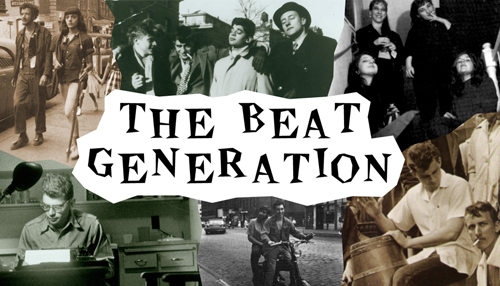
And that road often explicitly celebrates the attractiveness of death as in Kerouac or ginsberg,s frequent writing of his desire to curl up in the soft comfort of the womb. The other side of complete acceptance, then, is complete rejection, withdrawal into the cool neutral realm of perfect passivity. The opposite of “mad” was “beat” which meant “beatific”; and perhaps reverence for death, by somewhat absurdly and comically promoting and advocating the bottomless void. This touching however, of that tipping point between ecstasy and death is very profound:
“For just a moment I had reached the point of ecstasy that I always wanted to reach, which was the complete step across chronological timeinto timeless shadows, and wonderment at the bleakness of the mortal realm, and the sensation of death kicking at my heel to move on…” ( Kerouac )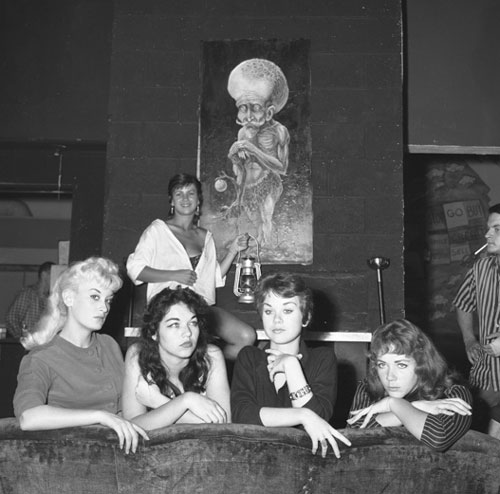
“Any attempt to label an entire generation is unrewarding, and yet the generation which went through the last war, or at least could get a drink easily once it was over, seems to possess a uniform, general quality which demands an adjective … The origins of the word ‘beat’ are obscure, but the meaning is only too clear to most Americans. More than mere weariness, it implies the feeling of having been used, of being raw. It involves a sort of nakedness of mind, and, ultimately, of soul; a feeling of being reduced to the bedrock of consciousness. In short, it means being undramatically pushed up against the wall of oneself. A man is beat whenever he goes for broke and wagers the sum of his resources on a single number; and the young generation has done that continually from early youth.” ( John Clellan Holmes, 1952 )
“Surprisingly, the modern academic Clive Bush describes Cassidy best (or Dean Moriarty as he is known in the novel), ‘the holy fool and angel, perhaps most of all the scapegoat. As well as being the embodiment of social and individual energy in Dionysian form, close to the ecstasy of the jazz rhythms…’. The exchange between the working class drifter, Cassidy, and the college boy poet, Kerouac, enhanced both, with the latter supplying the former with new literary and philosophical sources for his own writing (Proust being an obvious primary influence, but also Santayana, Dostoevsky and Nietzsche were favoured), and the former introducing the latter to their existential reality.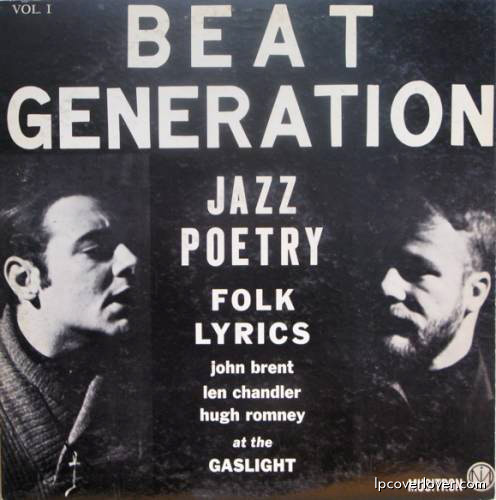
Cassidy had more than a few similarities to Huncke, both being the last embodiments of a counter current launched by the Lost Generation, but Cassidy was also something new. This new element would be the defining character shared by the Beats. Most succinctly described as ‘an ambition to recover a sense of self which married a visionary tradition to a recovery of individual worth which challenged the tacit norms and values of postwar America’. Though of course it was a lot more too, it was an attempted subversion of ‘the apparent consensus of the suburban American dream’. Drawing on a variety of eclectic sources (partly from the Lost Generation’s library, but also from texts introduced by others, Burroughs mainly, who, to name a few, brought them Rimbaud, Apollinaire, Breton, Tzara, Artaud, Genet, Kafka, Reich, Cocteau, Spengler, Huncke and most importantly W C Fields), the Beat poets created free style Proustian poetic that inspired a new generation of the dissatisfied.
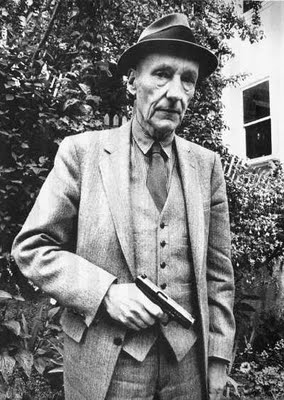
"Genesis P-Orridge, Sonic Youth, Iggy Pop in New Burroughs Documentary Beat Generation writer William S. Burroughs not only hung out with the cool kids in the 1960s, but he continued to collaborate and conspire with great musicians, artists, and directors up until his death in 1997 at the age of 83. Now an impressive group of said former friends and colleagues will appear in forthcoming documentary William S. Burroughs: A Man Within."
Perhaps most importantly it was also another attempt to create a spiritual metaphysic with which to underwrite their ‘personal authenticity’. A factor taken to extremes by camp followers and fellow travellers who would launch the forerunners of todays religious (and Ufological) cults. Even Cassidy later became a devout disciple of the psychism of Edgar Cayce and other pop mystics. Though like other more critical Beat visionaries he also came under the influence of genuine mystics, such as Gurdjieff and Ouspensky (as the well as the required Orientalism that had been a staple diet of malcontents since 1923). A whole new literary genre of Beat poetry emerged from all this (physically focused on new Bohemian districts of New York and the San Francisco bookshop ‘City Lights’ of anarchist poet and Beat convert Lawrence Ferlinghetti).
One of the greatest examplars of this new genre, Allen Ginsberg, intensified the mystical strand, and in particular its message of love, inspired by William Blake (much to the dismay of William Burroughs, Ginsberg’s early mentor, and an arch mystical nihilist,
in the tradition of his ‘hero’ the legendary Hassan Sabah, master of the Hashassin). However in terms of emerging counterculture it was not so much the Beat literary elite that was interesting, but the subculture that coalesced around them, the ‘beatniks’ as the mass media would call them. ..
Firstly it should be observed that the ‘beatnik’ counterculture was not simply a fan club for a handful of radical poets, or a fashion craze for goatees, berets and black polonecks, though neither was it a completely separate socio-cultural development. It was an evolution of the youth culture that began in the 20s, or perhaps more accurately an intellectual faction of it (influenced by those Lost Generation writers who chose to comment on it). It was also fed from the ‘drop out’ culture and the contemporary ‘drifters’ who instantiated it then. It that sence it is best understood sociologically from a genealogical perspective, one that includes material conditions(Marxists were never completely stupid) and socio-psychological ones. However it remains the case that this evolving subculture was very much shaped by the writings of the Beat Generation, which were themselves partly commentaries on this social
reality.
It might be said that there was a creative dialectic or feedback loop between the bottom up sociological reality and the top down ideological form. And this has been the case for countercultural evolution ever since. It was from these first real counterculturalists that what we call the counterculture emerged. Many had fully taken onboard Burroughs’ definition of them as catalysts for change, though this was not universally accepted by any means. Many others saw the ‘movement’ as just a youthful escapism in which they ‘lived for kicks’ (though the two visions are not necessarily incompatable). Both views would deny an overt plan to ‘change the
world’ as naive and missing the point. The point being to start to live for real.
A sharper difference was the problem of engagement. Many beatniks (and Beats) promoted a Buddhist like detachment from the world (the very term ‘beat’ was said to have a double meaning, on the one hand those that were ‘beat’ in their hopes for social reform or a better life on society’s margins, hopes inspired by the early Lost Generation writers, and experienced a world wearyness typical of their age; and on the other a Catholic ‘beat-itude’, the spiritual serenity before Sainthood!). Not surprisingly this led to pessimistic and cynical views on politics. Others, more politically conscious, or justice orientated, called instead for a greater engagement
with the world, rather than adopting an irresponsible opt out, a view championed by anarchistic radical Ferlinghetti with his slogan ‘only the dead are disengaged’ (who redefined ‘beat’ in terms of rhythm and entunement). All these splits were to remain
as counterculture evolved (and still do).”
a


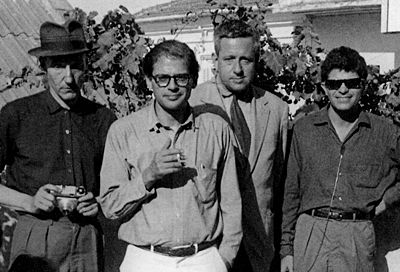
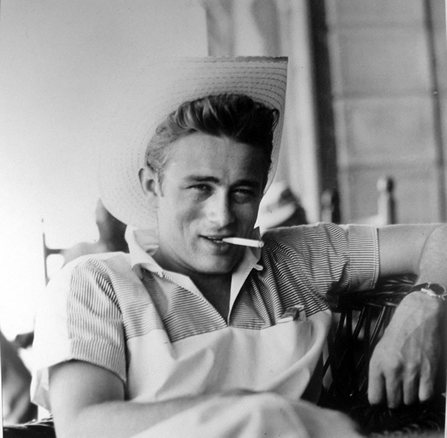
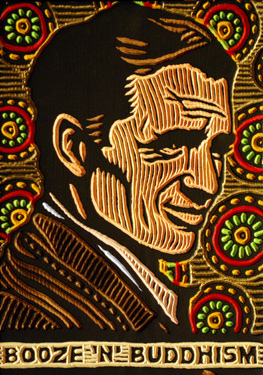
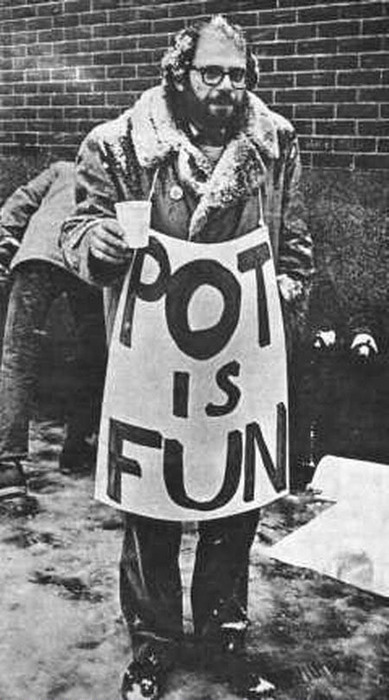



 COMMENTS
COMMENTS